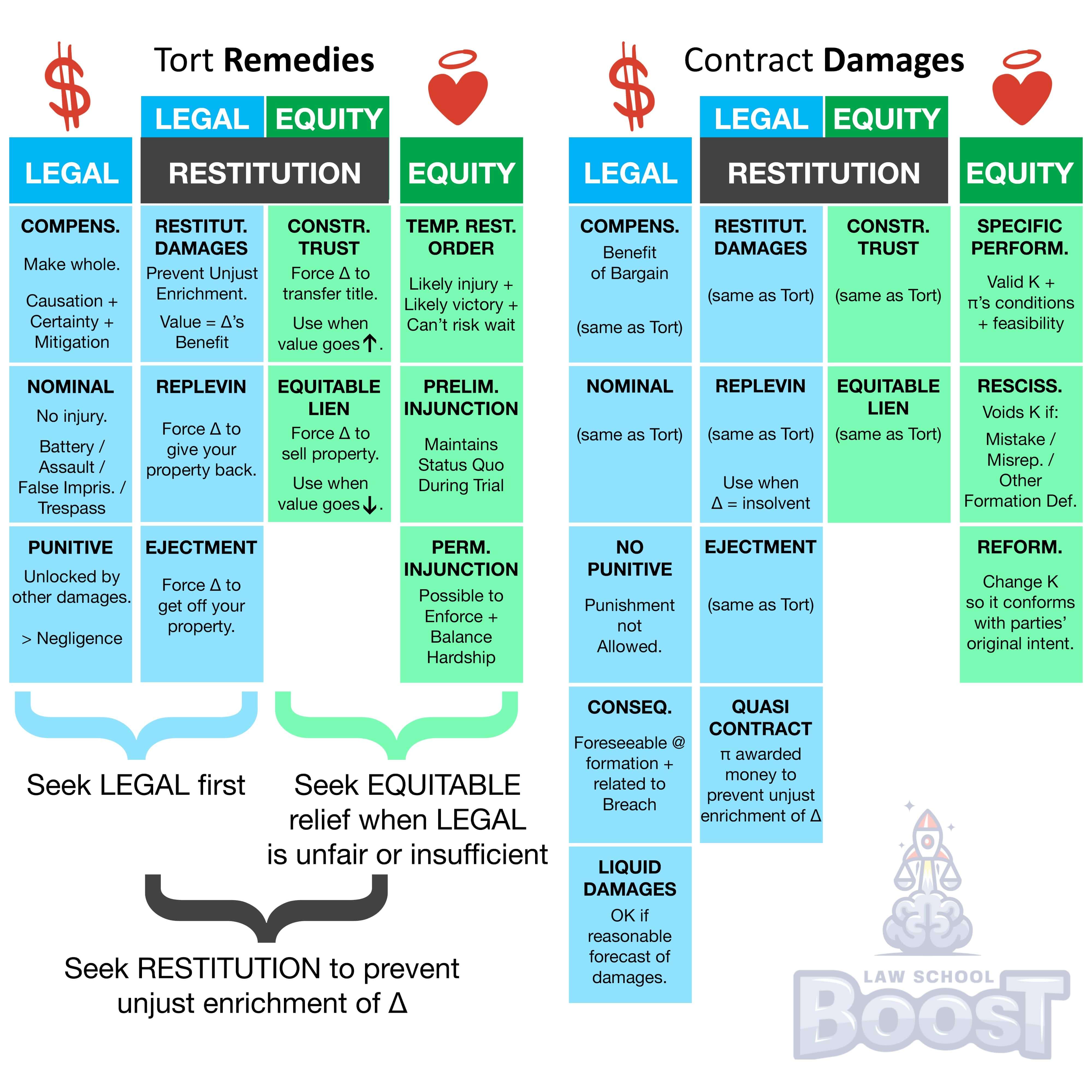🏥
Remedies • Tort - Legal Remedies
REM#009
Legal Definition
The judgment in a tort suit must be a single lump sum payment that will be *discounted to present value* without taking inflation into account (except under the modern view).
Plain English Explanation
In a perfectly accurate world, after a defendant is found liable in court for harm caused to a tort victim, the victim would be able to track the costs of their injury in real-time and bill those costs directly to the defendant, whether they are incurred today, tomorrow, or 20 years from now. This isn't realistic or practical. Even if there were some magic app to accomplish this, it would further burden the court system to have to maintain indefinite enforcement. Thus, when a tort victim wins a judgement, the amount of money is calculated for the lifetime of the injury, and then discounted to present value.
In other words, if a tort victim suffers an injury that will impact their life for 30 years, and the value of that impact is $1 million, it wouldn't be fair to cut them a check today for $1 million. Why? Because $1 million in the future is worth less today as a result of opportunity costs, investment potential, and a handful of other factors you probably zoned out through in your undergrad finance classes. Thus, the court takes the $1 million figure and calculates what that total amount would be worth today, then awards that amount to the plaintiff.
Note that traditionally, courts did not take into account inflation when performing their calculation. However, some modern jurisdictions do.
In other words, if a tort victim suffers an injury that will impact their life for 30 years, and the value of that impact is $1 million, it wouldn't be fair to cut them a check today for $1 million. Why? Because $1 million in the future is worth less today as a result of opportunity costs, investment potential, and a handful of other factors you probably zoned out through in your undergrad finance classes. Thus, the court takes the $1 million figure and calculates what that total amount would be worth today, then awards that amount to the plaintiff.
Note that traditionally, courts did not take into account inflation when performing their calculation. However, some modern jurisdictions do.
Hypothetical
Hypo 1: Bob is texting while driving and rear-ends Sam, causing whiplash injuries. Sam's chronic neck pain requires occasional medical treatment and physical therapy over the next 20 years. Result: Even though Sam's pain and suffering will persist for decades, the judgement would still be a single payment set at present value. It might be a very large payment to account for long-term effects, but paid as one lump sum upfront rather than partial payments over time. Under the modern view, the court would calculate in the cost of inflation that would impact the payment if it were to happen over 20 years.
Visual Aids

Related Concepts
In assessing compensatory damages for legal remedies in tort, how important is certainty and how is it assessed?
In assessing compensatory damages for legal remedies in tort, what are general damages?
In assessing compensatory damages for legal remedies in tort, what are special damages?
In assessing compensatory damages for legal remedies in tort, what is foreseeability?
In assessing compensatory damages for legal remedies in tort, what is unavoidability?
In assessing compensatory damages, what is causation?
In assessing legal remedies in tort, what are compensatory damages?
What are legal remedies in tort?
What are nominal damages for legal remedies in tort and what suits are they applicable to?
What are punitive damages for legal remedies in tort, how can a plaintiff get them, and what are their limitations?


